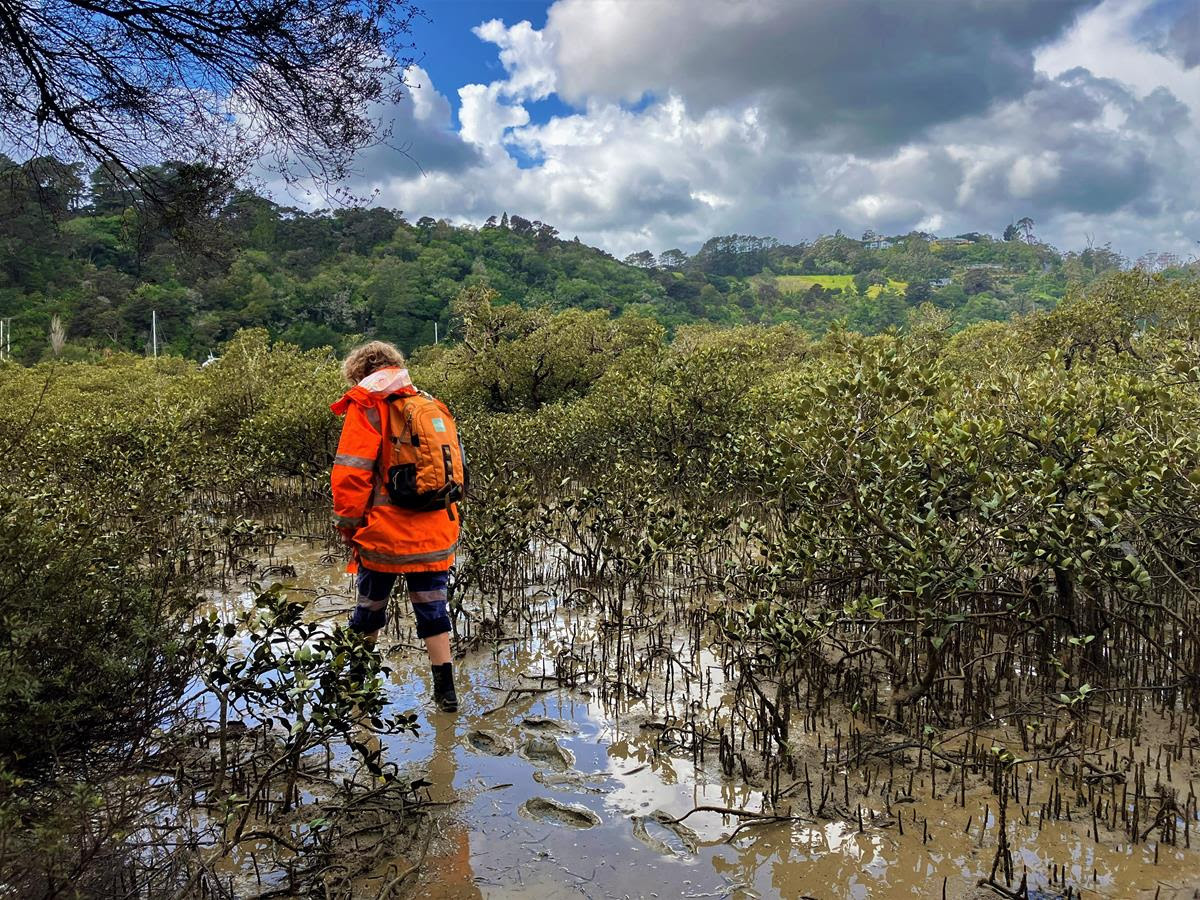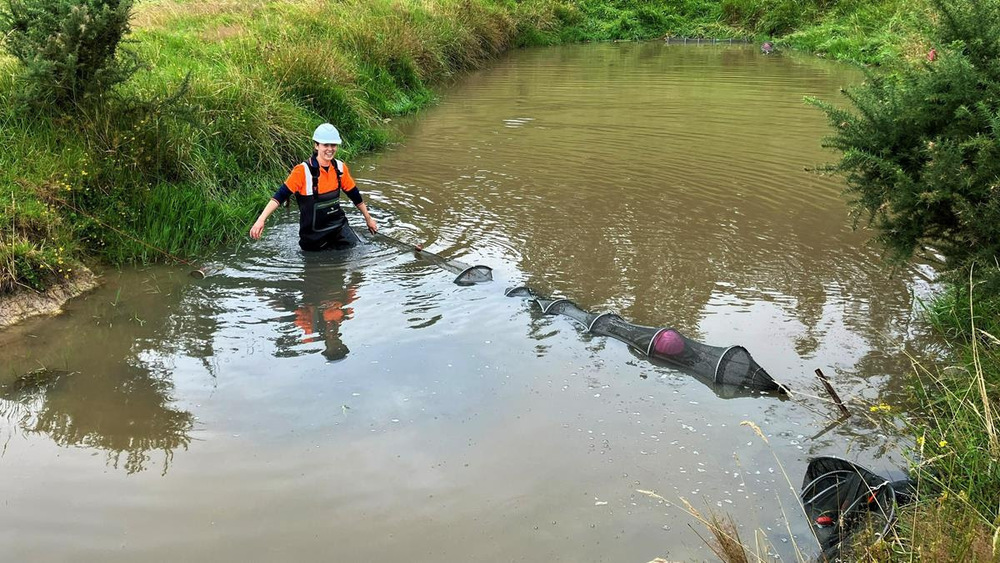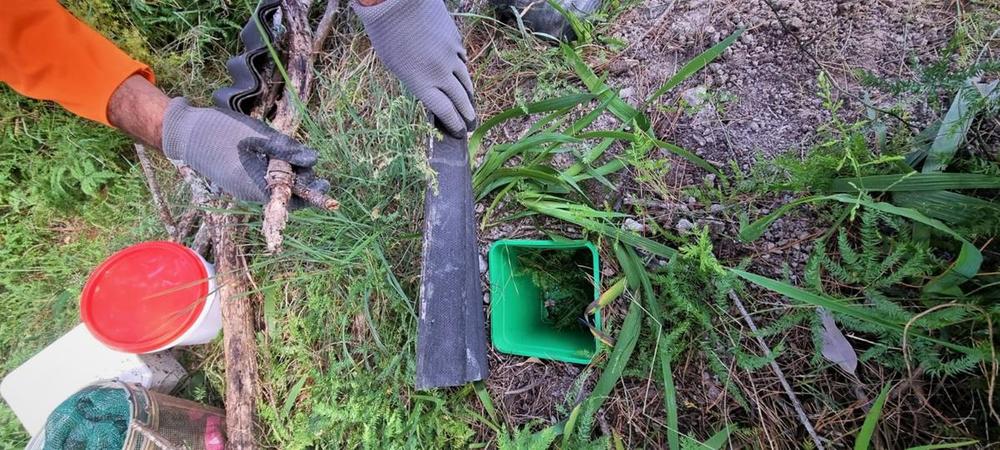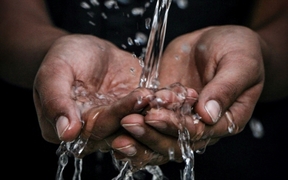Ecologists playing crucial part in the building of Penlink
Lara Fagan
01 February 2023, 5:42 PM
 An ecologist checking a coastal marine area for wading birds.
An ecologist checking a coastal marine area for wading birds.There are hoards of people involved in the construction of Penlink - designers, engineers and the construction crew.
But what about those on the ground making sure our natural waterways, fauna and flora are protected?
The day in the life of an ecologist working on the Penlink construction is a mixture of field and analysing observations.

The ecologists work hard to keep the natural environment within the project area safe and healthy.
They play a crucial role in understanding and protecting the natural waterways, flora and fauna within the project area.
The work of an ecologist can be incredibly diverse.
In January alone, they checked and set pitfall traps for lizards, checked and set eel nets in a farm pond and also checked the coastal marine area for native wading birds.

Pitfall traps are four-litre buckets dug into the ground and are used to capture lizards.
The traps are baited, and once the lizards are caught, the ecologist releases them safely away from the construction area.
The eel traps set up in farm ponds are also checked regularly.
Any eels that are caught in these nets are released unharmed in another pond away from the area.
On one day, an ecologist found 30 short-fin eels in the nets which were all safely relocated to another pond.
During the afternoons, ecologists don gumboots and wade through coastal marine areas looking for native wading birds.
They check bird nests and record their findings.
They decide on the next best step that will benefit the birds.
The peak breeding season for coastal birds is from August through to early February so it is important this work is done quickly and correctly.
A decision will be made on these birds once the breeding season is over.

LOCAL JOBS
HIBISCUS COAST NEWS
